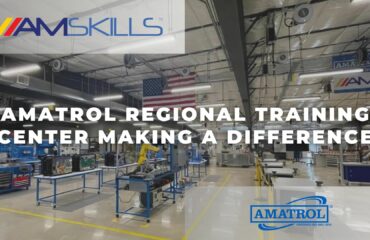Those familiar with manufacturing and the skilled trades know all about the skills gap and the challenge of hiring enough highly skilled workers to fill the hundreds of thousands of open positions throughout industry across the country. For years now, there simply haven’t been enough workers to meet growing demand.
Hiring managers tasked with finding skilled workers have long called for industry to work together with educational institutions to create a pipeline of talent. The message has been consistent: we need to train the next generation of workers with the advanced skills they’ll need to succeed in an increasingly automated world.
Has that call finally been heard? Perhaps. Generation Z—those born somewhere between the late 1990s and the early 2010s—represent the youngest segment of today’s workers and, in a recent article in The Wall Street Journal, author Te-Ping Chen claims “Gen Z is answering the call…the skilled trades are newly appealing…[and] many…are choosing to leave the college path.”
According to Chen, “[m]ore young people are choosing trades over college study…Rising pay and new technologies in fields from welding to machine tooling are giving trade professions a facelift, helping them shed the image of being dirty, low-end work.” Moreover, “[g]rowing skepticism about the return on a college education, the cost of which has soared in recent decades, is adding to their shine.”
Vocational training program enrollment also bolsters Chen’s belief that “Gen Z is becoming the toolbelt generation.” While “overall enrollment in community colleges and four-year institutions has fallen,” “[e]nrollment in vocational training programs is surging.” Likewise, “[d]emand for trade apprenticeships, which let students combine work experience with a course of study often paid for by employers, has boomed.”
Chen points out that “[f]ederal and state initiatives to encourage more training for students have helped spur interest.” More young people than ever before are considering the skilled trades, because they feel they offer both job satisfaction and job security.
That’s important in an age when generative artificial intelligence (AI) is shifting the landscape of many types of jobs. Many Gen Z workers think “blue-collar jobs offered better job security than white-collar ones, given the growth of AI.”
When asked about the impact of Gen Z on the skills gap, Michael Krupnicki, president of the American Welding Society, says, “It’s not a crisis story like it was a few years ago. The pendulum swing has happened hard and fast.”
That’s good news for industries everywhere. But the work is far from over. We must still do more to educate the next generation of workers about the options available in the skilled trades. This effort must include all interested parties, including parents, educators, and industry representatives. The historical stigma associated with the skilled trades will eventually fade away if students learn how challenging, satisfying, and lucrative positions in the skilled trades can be.
For years, Amatrol has been helping with this effort by working together with industry and educational institutions to design training programs featuring eLearning curriculum and hands-on experience with trainers equipped with industrial components workers will encounter on the job.
The experts at Amatrol know how rewarding careers in manufacturing and other skilled trades can be, and they’ve been dedicated for years to helping learners gain the knowledge and hands-on skills they need to secure satisfying jobs.
Amatrol’s training programs include cutting-edge technologies in a wide variety of areas, including electrical, electronics, automation, HVACR, process control, pneumatics, hydraulics, and more. Visit Amatrol online to learn more about its many different types of industrial training programs. For more information about how Amatrol can help you inspire and train the next generation of workers, contact an expert at Amatrol today!





